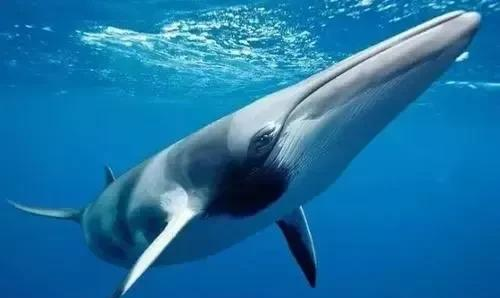Fin whales are an aquatic mammal in the genus Baleen whale and the second largest genus of baleen whales in the world. It is about 25 meters long and has a maximum weight of about 110 tons. Single or 2 to 3 animals move together, migrating to cold waters in the summer to ask for bait, and winter to breed in warm waters. Its diet consists of krill and chaff shrimp as small crustaceans, as well as group swimming fish such as herring, saury and striped fish. It is mainly distributed in Antarctic waters.

Fin whales have small eyes and are located above the back of the corners of the mouth. 2 air vents. There are 50 to 100 gray-brown sensory hairs around the upper and lower jaws and around the air vents. The back is bluish grey and the ventral surface is white. The fin whale's head accounts for about one-fifth to one-quarter of its body length, and is large, the color of the head is asymmetrical, the dorsal fin is small, the head has a longitudinal ridge, and the gray-white herringbone pattern at the back of the head is a favorable feature for close identification. The right side of the lower lip, mouth, and baleen is partly white, while the left side is all gray.
Fin whales have 56 to 100 fold grooves on their abdomen, and when they eat, the stomach needs more space to hold food, at which point the folds can be opened to increase the capacity of their abdomen. Their dorsal fin is curved and about 60 cm long. Their finned feet are small and slender, with a broad tail and a pointed snout.
Fin whales filter their food with baleen and swallow their stomachs, which feed on small fish, squid and crustaceans. When they eat, they travel at a speed of 11 kilometers per hour, and then open their mouths so that they can suck up to 70 cubic meters of seawater at a time. After sucking up the seawater, they will close their mouths and spit the seawater through their whiskers, and the seawater will pass through the whiskers and return to the sea, and small fish, crustaceans and other foods will be isolated and become the belly of the fin whale. An adult fin whale has 262 to 473 whiskers on each side of its mouth. The whisker plate is composed of, and due to the long-term wear and tear, these keratins are reduced to something that looks like hair, called whale baleen.
According to the research of scientists, fin whales will circle around the prey at high speed, so that the prey is integrated into a round circle, the density is extremely high, at this time the fin whale will filter out the prey one by one and swallow it into the stomach.
Fin whales are one of the fastest swimmers, reaching a speed of 37 kilometers per hour and recording a maximum speed of 40 kilometers per hour, known as the "Deep Sea Greyhound".
Fin whales were heavily fished during the 20th century and are still endangered. On November 14, 2018, the IUCN Red List of Threatened Species was updated, and fin whales were reduced from "endangered" to "vulnerable", mainly due to the ban on whaling.